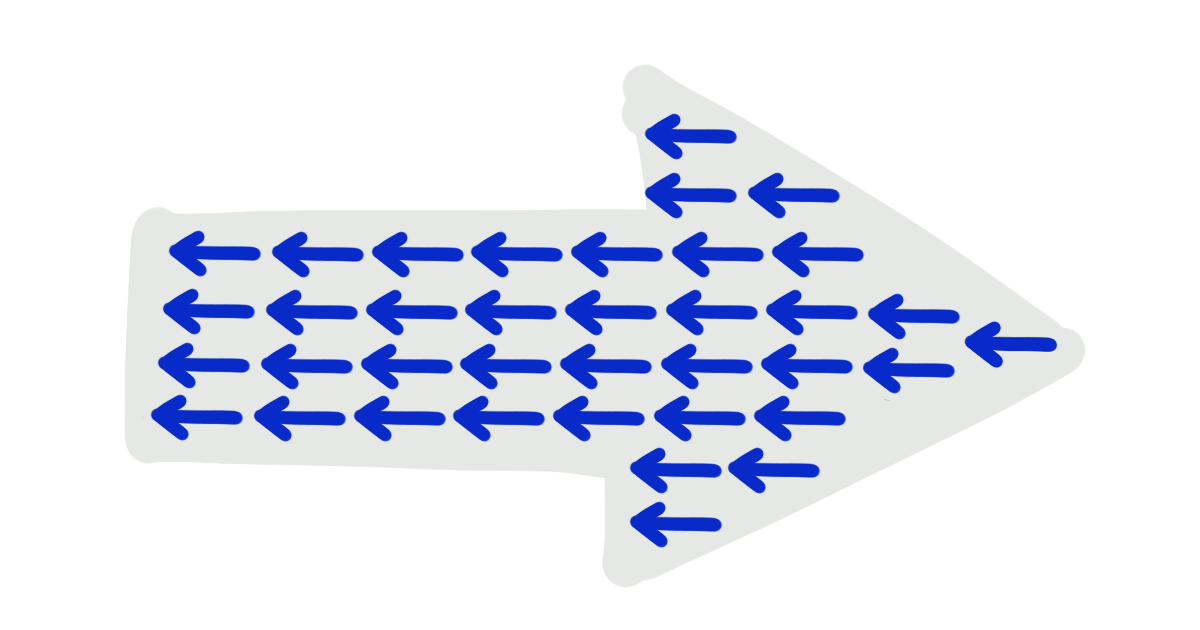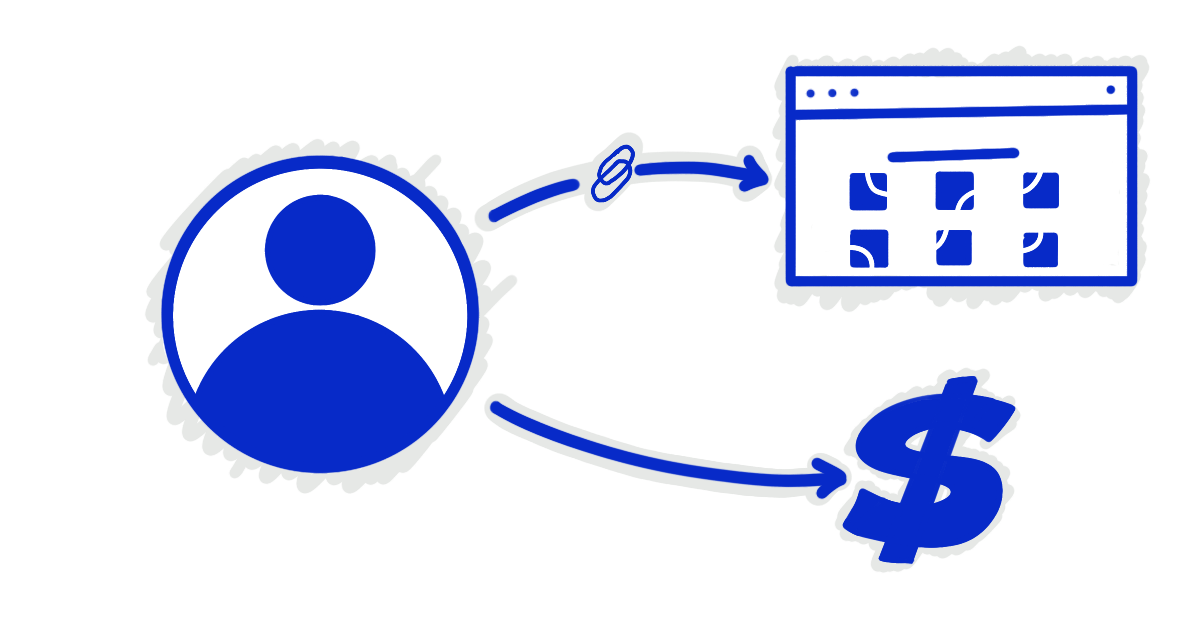Content marketing is changing. Are you ready?
Changes to Google search and social media algorithms are making old strategies weaker. Keep reading to learn how your business can adapt and get ahead.
We’re so sorry for your loss. You know, your outdated content strategy? That’s right. Your keyword-centric TOFU content that generates traffic but not much else? It’s dying. Let’s be clear: it’s important to get eyeballs on your site. But it’s even more important to get the right eyeballs on your site.
That’s getting harder.

Is this what your marketing efforts look like?
In this article, we’ll break down what you need to know as we enter a new era of content marketing. We’re going to explain why content marketing is changing, and how you can evolve with it.
Key Takeaways
- Search engine results are crowded. Ranking well doesn’t guarantee people are visiting your site.
- Social media is incentivized to keep users on their site. Your links are ‘disappearing.’
- It’s time to embrace content that is creative and native to a single platform.
Why is content marketing changing?
For the last decade or so, inbound content marketing has been one of the most influential ways to introduce and connect potential clients and customers with your business. Whether that was linking to your site on Facebook or X (Twitter), or creating blog content with a handful of keywords to rank organically, traffic was easy to come by. But that’s been changing. To understand why, you need to understand the incentive behind it.
Traffic is currency. Tech companies aren’t giving it away anymore
Facebook, Google, X, LinkedIn, and every other platform has one thing in common: ads are their main revenue stream. The more time people spend on their platform, the more money they can make from those ads.
Now, imagine you’re Facebook. Say Acme Staffing or Doe Law Office posts a link to an article on their site. Do you want people to click that link? Or do you want them to stay on Facebook and click an ad? Easy choice.

If you were Facebook, which route would you rather have a user take? The one that leads to an external website, or the one that keeps users in front of ads?
In recent years, we’ve seen an increasingly sharp decline in referral traffic from social media. Algorithms are essentially burying posts with links across the board, be it on Twitter, Facebook, or LinkedIn.
We’re seeing the same thing with Google too. Search engine results pages (SERPs) used to be full of ads at the top, followed by nothing but blue text (links) and gray text (descriptions). But today, SERPS are full of maps, featured snippets, reviews, AI-generated answers, summaries, and countless other features.

20 years ago, Google search was mostly links, as depicted on the left. Today, there are many other elements that push your site down.
People used to click on a website to get information. Now they get it right from the SERPs. The result is that fewer people are actually visiting websites from Google, and that’s no accident. Google largely wants people to either click ads, or click nothing at all. According to a Semrush study, over 25% of all searches end without a click.

A quarter of searches end without a click. Over-dependence on organic traffic is now a liability.
Now here’s the problem companies in every industry are facing:
How do they move on?
Many are following strategies that have gone five years without being updated. Some will see impacts sooner than others, but the change is clear. Old tactics may be useful, but they need to evolve with the environments they rely on.
What do these changes mean for your marketing strategy?
We’ve outlined the main impacts already, but let’s summarize them quickly:
- Your site is showing up less frequently in SERPs that are increasingly crowded with Google features.
- This means fewer people are finding you.
- Social media platforms are burying posts with links
- This also means fewer people are heading to your site
So, your strategy needs to change. An updated content strategy should accomplish two things:
- Meet users where they are
- Add value
Let’s break it down further.
1. Your content should meet users where they are
If you’re B2B and posting on LinkedIn, your content should be tailored to LinkedIn’s platform. Customize the information for the professionals you seek to engage with on LinkedIn. Format your posts for LinkedIn’s algorithm and use carousels, images, and polls to engage users. And try laying off the links and leaning into zero-click marketing.
2. Your content should add value
You don’t need to give away the punchline, but you should give readers enough useful information that they won’t feel cheated by engaging with it. Value is the ultimate way to generate traffic, build an audience, and move your business forward in this new age. If you can help users on social or in search, they’re more likely to engage, visit your profile, and follow the link there.
More importantly, adding value demonstrates your expertise, authority, and experience. It positions you a step above your competitors.
How to stand out
OK, so your content needs to meet users where they are, add value, and generally be better. But how do you do that? Being in the business of getting attention, we’ve got some suggestions. Here are a couple starting points:
- Turn complex topics into simple, insightful infographics.
- Create custom graphics rather than using easily-ignored stock photos.
- Implement a content flywheel to squeeze every ounce of value from your blogs.
- Do original research.
- Be bold.
- Be creative.
- Go the extra mile.
But what might be the most important is understanding what this takes. It takes time and it takes commitment. But the alternative is average, and if you want to be more than that, it’s time to stand out.

It looks complicated, but it only makes marketing easier. An effective content flywheel can make the most of a single piece and reach the most people.
Two paths diverge. Which will you take?
It’s a competitive world out there, and content strategies of old are up against a new foe. It’s a challenge and it’s an opportunity. Will your business adopt early and reap the rewards? Or will you wait for safety?
If you want to get a step ahead, get in touch with Grimpeur Marketing. We’ll audit your strategy and help you determine what needs to change and what can be preserved.
Want to get ahead?
We’ll help you create and execute a plan.
